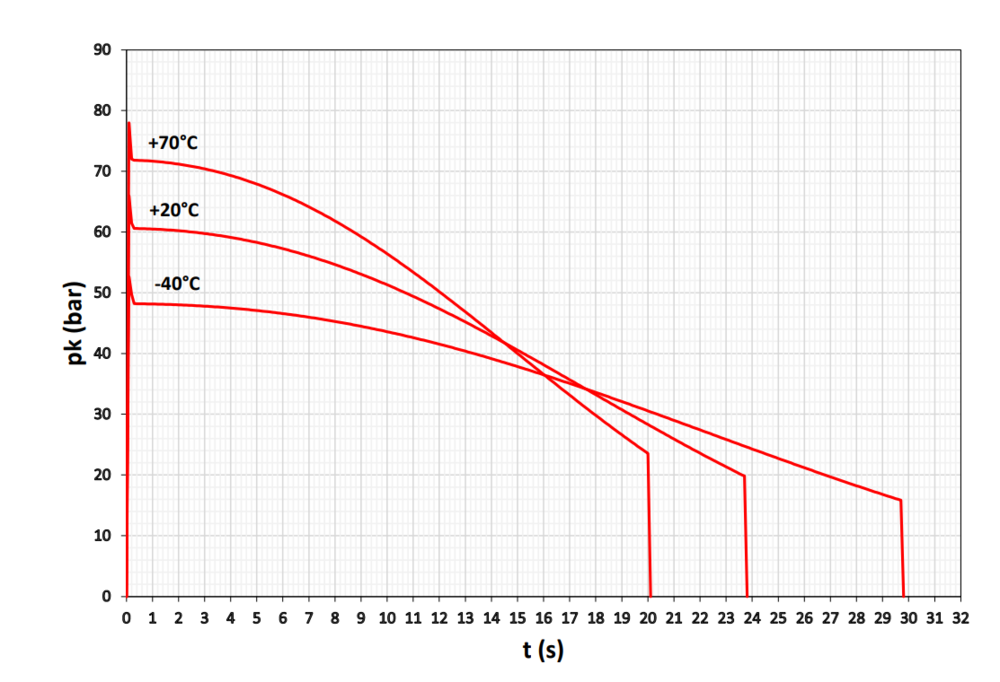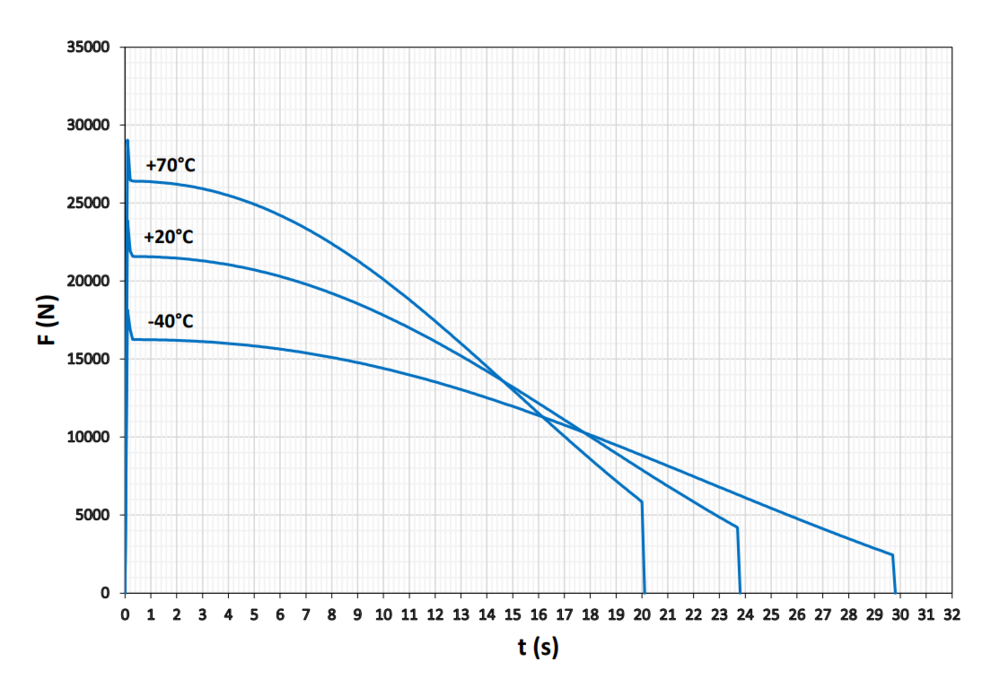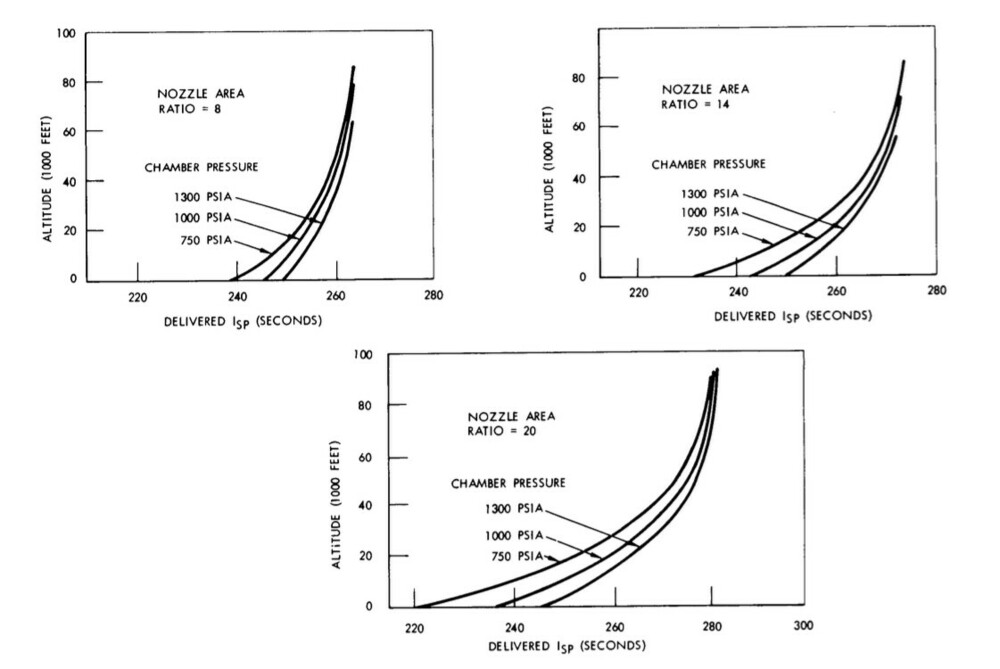

tavarish palkovnik
Members-
Posts
476 -
Joined
-
Last visited
Content Type
Profiles
Forums
Events
Everything posted by tavarish palkovnik
-
There is no single one relevant document and/or literature saying that Mk47 Mod.0 and Mk60 Mod.0 (even Mk47 Mod.1) have different output characteristics. Only DCS and WT say that. Missiles having same flight control section with all those stuffs inside, gyroscopes, accelerometers, barometers etc etc need to have same source of energy, otherwise dynamic and flight control would be impossible. Just like AIM-7E with two exchangeable motors, Mk38 and Mk52, one is with internal-external burning tube form of grain, other one with 5 point star. But both were giving same. Also AIM-7F with Mk-58 and Mk-65, first one is internal burning tubes with radial slots, while other one is with finocyl and slots in dogbone form but at the end both have same characteristics. That same is and must be case with AIM-54 as well. I made very detail mathematic, taking grain geometry of Mk47 and nozzle geometry of Mk60 and output came as for Mk60 should be. Only what is missing is to find and see how grain in Mk60 looks like. Perhaps slotted tube (two slots) like in Mk47 perhaps something else but it must give same result.
-
In addition after motor, to see what should be final score, what should be final velocity if motor gives this what it is gives. One example easy to calculate, horizontal flight, max altitude and max launch speed T.pdf Looks fair and square, total drag impulse is 137500 Ns what is 30% of thrust impulse, total additional speed 840m/s what seems as reasonable for this altitude By the way...with same model and if thrust force would be constant 13595 N for 27 seconds, final velocity came out as 1265m/s or 4,29M
-
A little bit more of mathematic ... AIM-54 motor.pdf I don't know what public available data were used, either by NASA or here. All I know NASA in their own handbook (Solid Rocket Motor Nozzles, page 10) gave characteristics of this motor, in very much details. Together with configuration of grain these numbers are precisely confirmed as you could find on previous page Depending of temperature motor works from 20 to 30 seconds √ Maximal chamber pressure from 1000 to 700 psi (from 69 to 48 bar) √ Average thrust from 5000 to 1000 lbf (from 22269 to 4454 N) √ Only maximal pressure of 69 bar I've got a bit higher, all right, maybe it is not +70degC but +60degC or +65degC as upper limit. When have all this, and when have basic theory about rocket propulsion everything can be calculated, it means easily and indisputably we can have thrust values of this motor in function of altitude. Of course, this is one pair of aces, the other pair of aces is that drag coefficient significantly increase with altitude because of friction, but this motor compared to some others gives up there quite much then friction takes.
-
As promissed, here it is pk AIM-54.pdf It is free to use, if you once decide to make modification OK, if not again OK, I do not play this game after all so it will not bother me. But what bothers me is that most of googling about this motor is related to DSC and WT, and data coming from there, data which are simply wrong. Tomorrow when and if AI takes control, hopefully never, it will be spectacular. It is an order to share it here, after all, here in all these pages huge portion is done, geometrical features of motor and concept and geometry of grain raised up, and that made half of work done. Rest is just merging of it with existing and available output data about this motor, by using common theory about rocket propulsion with various data related to that time, and here it is. For any question about any of these steps, data, formulas, whatever, I'm available
-
Tomorrow or in coming days I will share you complete calculations about this motor, it is actually already done after some time of investigation, base is done and I will just add some finesses like erosion of throat and temperature sensitivity coefficients to see how it works at min and max temperature. No wish whatsoever to implement it in this game, just want to write something what is different to what circulates on the internet about this motor (motors) … just want to make it correct
-
No it wouldn't because specific impulse is very fluid value. In such hypothetical (impossible) case where atmosphere influence by chocking motor but in same time does not produce drag, missile would reach maximum 3 M Take a look page in front, those diagrams how specific impulse change with chamber pressure, nozzle expansion ratio and altitude. Phoenix motor is with nozzle ratio 18,5 and average pressure is 700psi so easily case with nozzle ratio 20 and pressure 750psi can be used. Down there specific impulse is 220s (I've got 216s in calculation) -> So down there impulse should not be 2490 Ns/kg but 2158 Ns/kg (220*9,81) and together with ln(447/279) it makes 1017m/s or 3M (speed of sound at sea level is 340,28m/s) Of course this combination without drag at sea level is just empty talks, but up there where atmosphere is rear, where this awkward motor gives high impulse (range of 270-275s) things are significantly different
-
Hmm, much more documents talk about velocity above 4M. Luckily professor Tsiolkovsky left us theorem which still holds undisputed -> v=Isp*ln(m0/m1) One documented sample, rocket R-40 (MiG-25) of similar exterior and drag respectively. It says maximal velocity missile itself generates depending on altitude and launch speed is 540 to 720m/s. Of course lower level of stratosphere (above tropopause) should be considered as altitude for maximal, and there speed of sound is 295m/s what will be needed to convert it to Mach number. R-40 is with starting weight of 470kg, propellant weight is 118kg…ln(470/352)*Isp=720 … Isp=2490 Ns/kg This is specific impulse up there after real one is degraded by drag loses. Motor of R-40 works on much higher pressure then one of AIM-54, pressure increases specific impulse, but motor of AIM-54 has high expansion ratio of nozzle which also increases impulse on altitude and turn it and twist it all around…that could be like deuce in tennis. Why not to consider same specific impulse for AIM-54 … -> ln(447/279)*2490=1174m/s … -> 1174/295=3,98 M … maximal self generated velocity of missile. Information on internet often can be quite vague
-
Wrong in video and ILS presentation how this fight was going on, or wrong in description of mine? It was long time ago when I was interested in this so I forgot, does KOLS can be merged with radar?
-
It would have much more sense that scale is in km but scan said in m. Perhaps it was by translating bad copy, like said meters would be insignificant, kilometers would make something but still in comparison with X axis Z is not significant for what I’m interested
-
You are welcome! That should be third axis of Cartesian coordinate system, slight declining from ideal and straight line of sight. Most likely, because they took this matter seriously, due to like they wrote, errors caused by wind, initial aiming errors, off-center thrust, inclined rudders etc. Don’t claiming, just assume it is about although declining value is really insignificant, but presenting of trajectory in horizontal plane should be for sure.
-
No, dog-bone should not be in sustainer, these two radial cross sections are more ''booster grain on sustainer side'' and ''booster grain on nozzle side'' as it looks like in longitudinal cut. Otherwise motor would explode becuase roughly calculated pressure would go in range of 300 bar. This could be normal motor after all
-
It says nozzle exit diameter is 3,78 inches (96mm) Also that throat area is 1,81 sq.inches so throat diameter is 1,518” (38,56mm) 96^2/38,56^2=6,2 what is nozzle expansion ratio Today I was doing lot of “mental gymnastics” about all these numbers, not sure but perhaps I managed to make some basis for Mk58 relatively to presented numbers. In coming days I will show it, perhaps even tomorrow if everything fits.
-
Motor or motors because there are plenty of those. Mk38 Mod.0,1,2 Mk38 Mod.3,4 Mk52 Mod.1,2 Mk65 Mk58 First three groups are with similar (nearly same) output and different and/or nearly same concept. Last two motors are with similar/same output but completely different concept. These last two are interesting because numbers circulating behind it on the Internet are just like in case of Phoenix very tricky





.thumb.png.71846cbf8b5783a56004ef31ee67b001.png)
